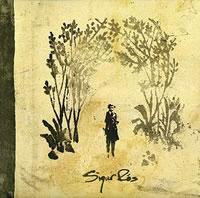Denser and Occaisonally More Conficted, Yet Remaining Majestic
The latest Sigur Rós album is yet another soundtrack to an imaginary movie you’re asked to create in your own head. The swelling orchestral resolves mostly corral you into thinking goodness and heavenly inspiration with singer "Jonsi"’s high pitched child-like (and sometimes cat-like) vocals sung either in a language of his invention and on some tracks for the first time actual Icelandic, making it easier for your personal invention as you’ll have no idea what he singing about. Not that it matters. The group’s music wears its mostly uplifting emotional heart on its sleeves.
The orchestrations are denser than on previous Sigur Rós albums, whether driven by strings or layered electric guitars, while the minimalist breaks have that special innocence borne of what sound like tinkle-y toy pianos and celeste. Is “Sé lest” so named because the song relies so heavily on celeste? I don’t know, but it’s one of the albums charmers, with its “oompah pah” break and simple repetitive motif.
The first half five tracks are of the uplifting variety but with “Sorglópur” the music takes on a more wistful, desolate feeling and when the drums and bass kick in, an almost ominous sensation takes hold—a sense of struggle— which is rare in this group’s oeuvre.
As the album proceeds from there, the songs take on a slightly darker cast with “Gong” containing moments of actual conflict and regret.
If you’ve not yet heard Sigur Rós, you’re missing a genuine musical treat. There’s not an album they’ve released that’s not worthwhile, though inevitably fans have favorites. Detractors would say they’re all built upon the same preciousness that infects the now all but thankfully forgotten “New Age” music of the Windham Hill ‘80s, but that would be cynical and coarse. What makes the band special is that it can tread in seemingly precious emotional territory and get away with it, melting even the most callous hearts.
Yes, the sun comes out at the end of almost every Sigur Rós composition, but is that such a bad thing? On Takk the band shows a newfound sense of melancholy that adds depth to its emotional and tonal range. The closer, “heysátan” is a slow denouement that lets you off the ride on a gentle, contemplative pillow.
Adding to the pleasure found on the band’s releases is the always great recorded sound, even when electronically processed. The mixing, by Kenneth Vaughan Thomas, is especially adept throughout the catalog, almost all of which can be found on vinyl (if you look hard enough and well worth the effort).
Only 1000 copies of Takk have been pressed on vinyl in a gorgeous embossed, textured gatefold package containing two LPs and a one sided 10” single of the song “Milanó.” The CD packaging is equally opulent but can’t match the LPs tactile and visual drama. And of course the LP, cut at Sterling Sound in New York, most likely from a digital file and pressed in the UK at EMI, for whatever reasons, sounds more pleasing to the ear.
An album guaranteed to hold your attention and lower your blood pressure.
- Log in or register to post comments



